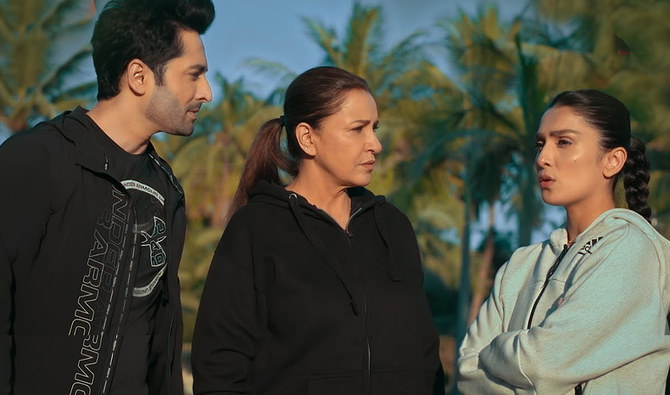KARACHI: With only a couple of days left till the holy month of Ramadan kicks off, Pakistani writers and actors said on Monday that viewers will be enthralled by “light-hearted” TV dramas that are produced specially for the holy month.
Muslims in Pakistan and around the world fast during Ramadan, the ninth month of the Islamic lunar calendar, from dawn to sunset, abstaining from food and drink. Over the past couple of years, Pakistan’s showbiz industry has provided millions of viewers across the country with entertainment in the form of avidly watched television game shows and Ramadan-themed TV shows.
This year is no different, as at least three projects, particularly produced for the holy month, are going to be aired on TV to give the audience a break from the regular TV dramas that revolve around tragic topics such as family disputes, extra-marital affairs, divorce, and others.
Arab News spoke to a few writers and actors to find out more about these dramas.
‘Chand Tara’
Starring real-life celebrity couple Ayeza Khan and Danish Taimoor, Chand Tara is written by Saima Akram Chaudhry, a seasoned writer who has written critically acclaimed Ramadan TV dramas such as Suno Chanda, Suno Chanda 2, Hum Tum, and Ishq Jalebi.
“My Ramadan plays are family-oriented, feature family members of all age groups, and encourage a joint family system,” Chaudhry told Arab News.
Chaudhry said she watched dramas on Pakistan Television (PTV) with her family, hence she ensures her dramas can be enjoyed by families and are filled with messages at the same time.
“The joint family system has its pros and cons. The system isn’t bad but we need to give space to people,” she said. “This is the central theme of Chand Tara in addition to small messages in every episode.”
Light-hearted plays aired during Ramadan get more traction compared to the rest of the year, Chaudhry said, adding that viewers follow them regularly as they air each day.
“It’s easier to convey messages in a light-hearted way,” she explained.
Chaudhry revealed that she has tweaked a few things in the narrative of Chand Tara after she was criticized for her past projects. The male and female lead in the play are not related to each other, Chaudhry said, and their love story doesn’t start with fights.
Directed by Danish Nawaz and produced by Momina Duraid, Chand Tara also stars Rehan Sheikh and Saba Faisal in prominent roles.
‘Fairy Tale’
One of the much-anticipated comedy plays to be aired this Ramazan is Fairy Tale, written by Saira Majeed and directed by Ali Hassan.
“It’s a beautifully written story on how destiny plays its cards not just in love, but in every aspect of your life. The idea here is to take viewers on a magical, dreamy, light-hearted, and entertaining ride. Hence, a ‘fairy tale’,” actor Hamza Sohail, who stars as entrepreneur Farjaad Khan in the play, told Arab News on Monday.
“There’s no denying the fact that Ramadan shows have a huge audience and all eyes are set on them.”
Sohail, who plays the role of the male lead in Fairy Tale, told Arab News he is “excited” to showcase his work, hoping to deliver good family entertainment to viewers.
Sohail stars opposite actress Sehar Khan, while the drama has an ensemble cast that includes actors Ali Safina, Saleem Sheikh, Adnan Raza Mir, and Salma Hasan.
‘Rukh Ma Roshan’
Adding to the list of Ramadan-special plays is also Rukh Ma Roshan, a story that revolves around a couple and stars Pakistani actors Muneeb Butt and Komal Meer.
“The play is about a couple who keep fighting with each other. They have funny chemistry with each other. It’s romantic, sweet, and innocent,” Butt told Arab News on Tuesday.
“It’s a situational comedy that will run during Ramadan. Its content is enjoyable for viewers since it is not the typical saas-bahu (daughter-in-law, mother-in-law) misery. It has very light content that people usually like to watch during Ramadan. Audiences will really like the fresh feel it [offers].”
The plot of Rukh Ma Roshan incorporates some issues that the two lead characters resolve together, which brings them closer to each other.
In addition to Butt and Meer, the play also features veteran actresses Shamim Hilaly and Zainab Qayyum in key roles.




























